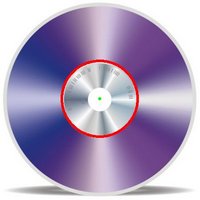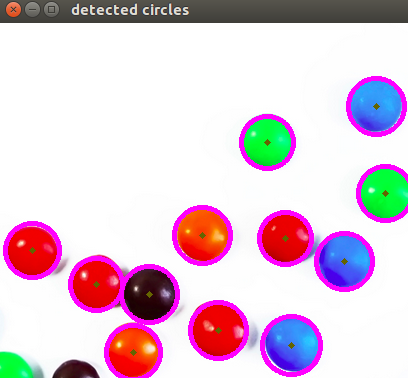 |
OpenCV 4.14.0-pre
Open Source Computer Vision
|
 |
OpenCV 4.14.0-pre
Open Source Computer Vision
|
Prev Tutorial: Hough Line Transform
Next Tutorial: Object detection with Generalized Ballard and Guil Hough Transform
| Original author | Ana Huamán |
| Compatibility | OpenCV >= 3.0 |
In this tutorial you will learn how to:
In the line detection case, a line was defined by two parameters \((r, \theta)\). In the circle case, we need three parameters to define a circle:
\[C : ( x_{center}, y_{center}, r )\]
where \((x_{center}, y_{center})\) define the center position (green point) and \(r\) is the radius, which allows us to completely define a circle, as it can be seen below:

The image we used can be found here
You can see that we will draw the circle(s) on red and the center(s) with a small green dot
The result of running the code above with a test image is shown below:
